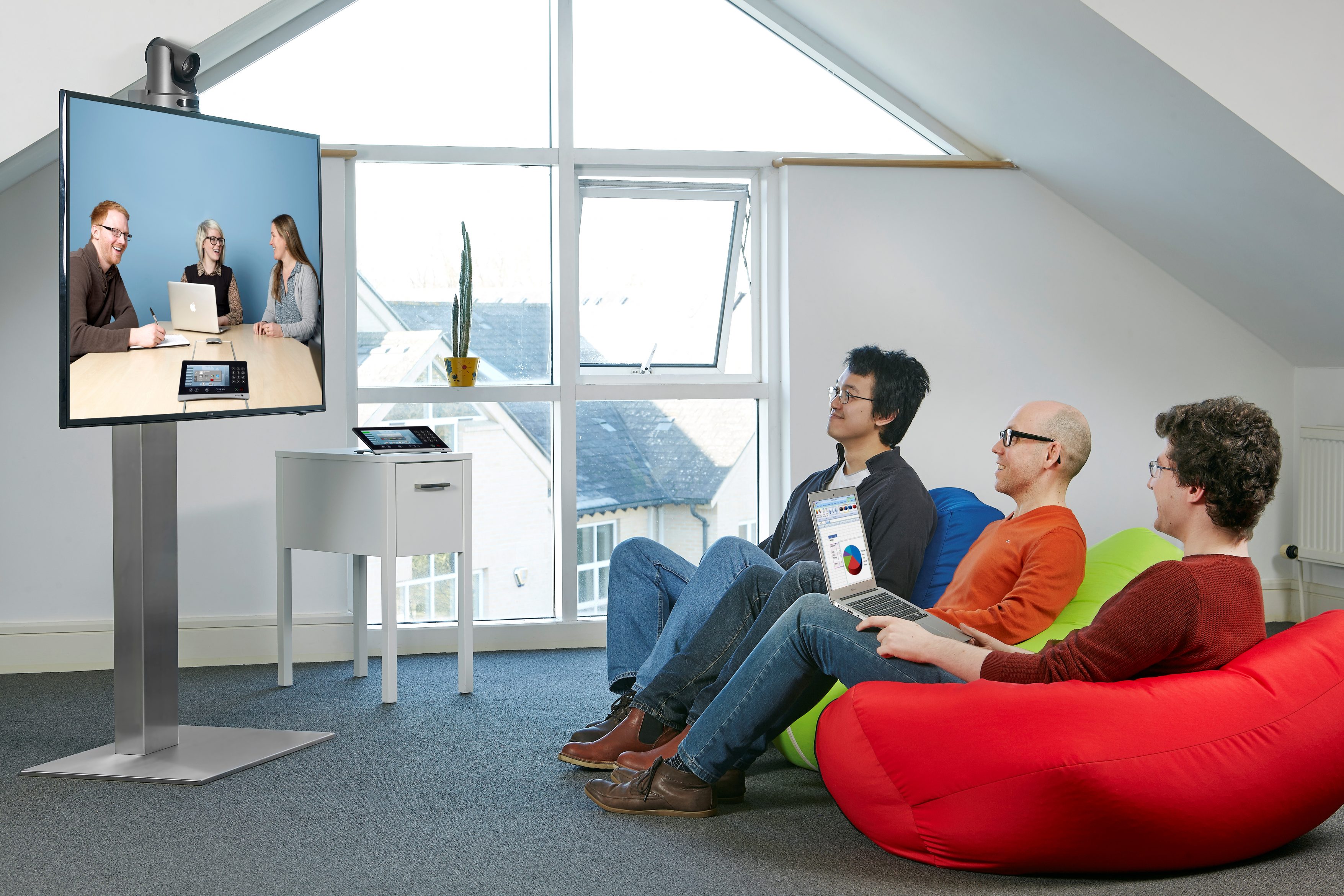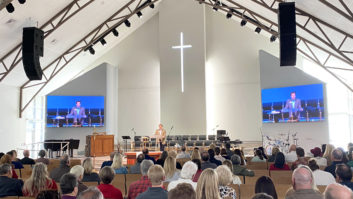
Having previously revealed the upturn towards cloud-based services across the AV industry, here Steve Montgomery reports on the markets within the industry reaping the benefits of the cloud and those still cautious.
Within the AV sector, primary applications like digital signage and video communication are rapidly shifting to a cloud-based model, but for different reasons. Digital signage applications benefit through the ability to deliver content to a widely deployed network of screens, while videoconferencing takes advantage of the ubiquity of the cloud to connect users wherever they are, and on whatever device. “In the past 18 months the cloud has become the accepted method of content transmission to digital signage screens across most sectors in which we operate,” says David Oades, managing director of Sedao. “In the retail space it has long been standard, as there was simply no other way to deliver content to a national network. However in the education and corporate sectors we have experienced reluctance due to security fears of end-users.
“Those fears are being allayed, but they are still there to some extent and integrators and end-users should be cautious. There are a myriad of cheap, ineffective hardware units and free software solutions available that are controlled via the cloud and offered as white-label products. Integrators need to be confident of the security of data held by these systems and who has access to it. They need to consider the long-term viability and availability of that service. Integrators should only use companies with a tried and tested record; but that applies to all cloud solutions, not just signage.”
Within video communication operations, the advantages of cloud-based services are also attractive. The current trend is for the cloud to be offered as an infrastructure replacement. “Businesses that have significant investment in AV equipment and videoconferencing suites are looking to the cloud to serve as a replacement for a multitude of network-based appliances,” believes Michele Durban, director of marketing at Starleaf. “This includes physical appliances that provide directory management, endpoint management, gateways, firewall traversal, MCUs (bridges). Organisations with a large number of rooms will have a very large and complex infrastructure arrangement. A key element is the explosion of video across desktops and mobile devices, which requires both interoperability and scalability.
“However, cloud-hosted VC devices cannot offer a full infrastructure replacement as they do not handle point-to-point calling between people and their chosen video systems. Rather they solve the problem of connecting people on different systems, on a pre-arranged or scheduled basis, where everyone dials in. Our usage statistics show that 68% of all traffic on our cloud is person-to-person, with the remaining 32% being scheduled or ad-hoc multiparty meetings. This characteristic is one that we have addressed with the OpenCloud system.”
Common advantages
Both digital signage and videoconferencing, and others across the AV domain, benefit from common advantages offered by the cloud, including ease of scaling, reduction in cost and shift from capital to operational expenditure, software version control and technical support operations. Beyond those, they also offer simplicity of operation and the enabling of new and unique services and applications to meet an ever-increasing appetite and demand for services and experiences. Vishnu Rao, NanoLumens’ director of software services and platforms is aware that “The requirements for integrators and users have evolved dramatically in recent years, challenging them to create next generation application based experiences to attract the digital millennials. Content creators and system operators nowadays want a 360° visualisation management solution that allows them to prepare for the experience needs of today, tomorrow and beyond. They don’t want multiple solutions stuck together piecemeal, making their operations complex, increasing failure points and inhibiting future growth.”
Cloud-based services lend themselves to modern-day business practices – in particular the need for scalability and expansion of services as fast-moving organisations adapt and expand their operating procedures. They facilitate the installation and commissioning of services with less disruption and limit the need to purchase and install additional hardware. The ongoing management and maintenance of solutions is more cost effective for end-users and delivers a higher margin service for integrators. They are ideally suited to business models that are based on recurring fees. End-user capital expenditure is minimised while operational costs are allowed to scale in line with the value delivered by the solution, so maximising the return on investment.
While the cloud may seem like the holy grail of AV service provision, it is unlikely to offer a complete and total solution; at least in the foreseeable future. Says Rao: “I believe that evolution in the future will be toward a mix of cloud and on-premise serviced solutions. Cloud services will increasingly become common for IoT-based visualisation solutions. These benefits will reduce operational cost to users, increase productivity and provide futureproofing to users. It will allow users to plan and streamline the execution of their AV ideas more effectively and creatively. On-premise will take up the responsibility of guaranteeing uptime with offline capabilities, as well as data storage and security in cases where it may not be permitted to push certain data types to the cloud due to regulations.”
What is certain is that the use of the cloud across the whole AV industry will expand, just as it has in the whole of the IT sector. Generally the trend is that services are moving from on-premise to cloud. Companies do not usually choose to bring applications back on-premise once the benefits of cloud hosting have been realised. As Nic Milani, executive director of cloud services at Crestron believes: “I have yet to see a customer move back from a cloud to an on-premise model. All interest is in the other direction. A good option is to offer an on-premises version of the application software as well as a cloud-based one, so that users can simply choose at the time of purchase and migrate as and when they are ready to do so. Currently, we have encountered a roughly 70/30 split between cloud and on-premises services since introducing our cloud platform.”
www.crestron.com
www.nanolumens.com
www.sedao.co.uk
www.starleaf.com







